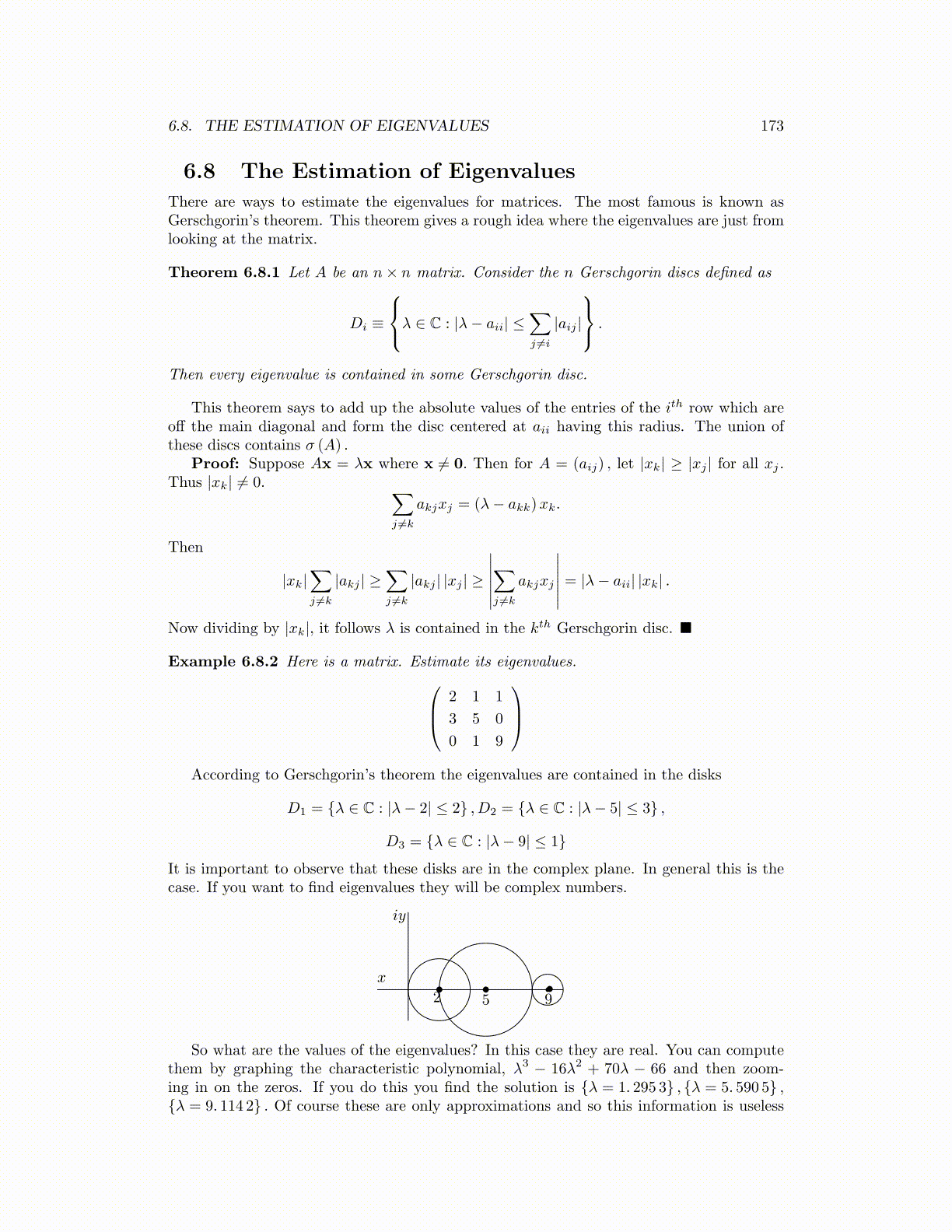
6.8. THE ESTIMATION OF EIGENVALUES 173
6.8 The Estimation of Eigenvalues
There are ways to estimate the eigenvalues for matrices. The most famous is known asGerschgorin’s theorem. This theorem gives a rough idea where the eigenvalues are just fromlooking at the matrix.
Theorem 6.8.1 Let A be an n× n matrix. Consider the n Gerschgorin discs defined as
Di ≡
λ ∈ C : |λ− aii| ≤∑j ̸=i
|aij |
.
Then every eigenvalue is contained in some Gerschgorin disc.
This theorem says to add up the absolute values of the entries of the ith row which areoff the main diagonal and form the disc centered at aii having this radius. The union ofthese discs contains σ (A) .
Proof: Suppose Ax = λx where x ̸= 0. Then for A = (aij) , let |xk| ≥ |xj | for all xj .Thus |xk| ≠ 0. ∑
j ̸=k
akjxj = (λ− akk)xk.
Then
|xk|∑j ̸=k
|akj | ≥∑j ̸=k
|akj | |xj | ≥
∣∣∣∣∣∣∑j ̸=k
akjxj
∣∣∣∣∣∣ = |λ− aii| |xk| .
Now dividing by |xk|, it follows λ is contained in the kth Gerschgorin disc. ■
Example 6.8.2 Here is a matrix. Estimate its eigenvalues. 2 1 1
3 5 0
0 1 9
According to Gerschgorin’s theorem the eigenvalues are contained in the disks
D1 = {λ ∈ C : |λ− 2| ≤ 2} , D2 = {λ ∈ C : |λ− 5| ≤ 3} ,
D3 = {λ ∈ C : |λ− 9| ≤ 1}
It is important to observe that these disks are in the complex plane. In general this is thecase. If you want to find eigenvalues they will be complex numbers.
x
iy
•2
•5
•9
So what are the values of the eigenvalues? In this case they are real. You can computethem by graphing the characteristic polynomial, λ3 − 16λ2 + 70λ − 66 and then zoom-ing in on the zeros. If you do this you find the solution is {λ = 1. 295 3} , {λ = 5. 590 5} ,{λ = 9. 114 2} . Of course these are only approximations and so this information is useless